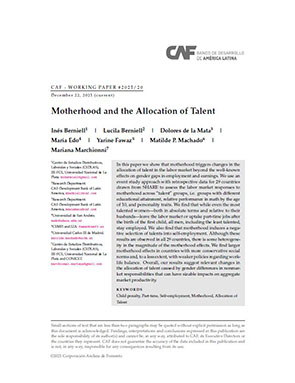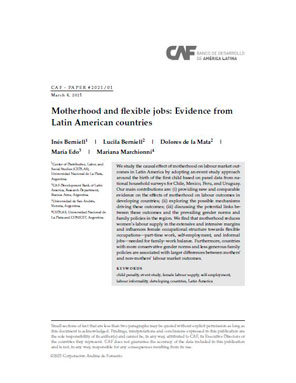Motherhood, Pregnancy or Marriage Effects
Resumen
The existence of large child penalties on women’s labor market outcomes has been documented for multiple countries and time periods. In this paper, we assess to what extent marriage decisions and pregnancies (including those ending in non-live births), may explain partly these child penalties. Using data for 29 countries drawn from SHARE, we show that although marriage has a negative effect on women’s employment (3.3%), its magnitude is much smaller compared with the negative effect of a first child (23%). Moreover, we find that pregnancies that end in non-live births have non-statistically significant effects on employment in the following years, supporting the exogeneity
assumption underlying the identification in child penalty studies. These new results lend support to the hypothesis that child-rearing, rather than marriage or pregnancy, is responsible for women exiting the labor force upon motherhood.
Materia
País / Región
Fecha
2021-12-28Citar de esta publicación
Item perteneciente a la Colección
Autor
Berniell, InésBerniell, Lucila
de la Mata, Dolores
Edo, María
Fawaz, Yarine
Machado, Matilde P.
Items Relacionados
Motherhood and the Allocation of Talent
In this paper we show that motherhood triggers changes in the allocation of talent in the labor market beyond the well-known effects on gender gaps in ...
Motherhood and flexible jobs: Evidence from Latin American countries
We study the causal effect of motherhood on labour market outcomes in Latin America by adopting an event study approach around the birth of the first ...
Gender Gaps in Labor Informality: The Motherhood Effect
We estimate the short- and long-run labor market impacts of parenthood in a developing country, Chile, based on an eventstudy approach around the birth ...




